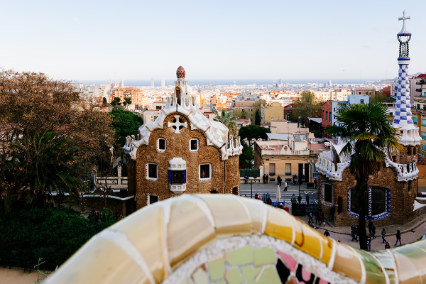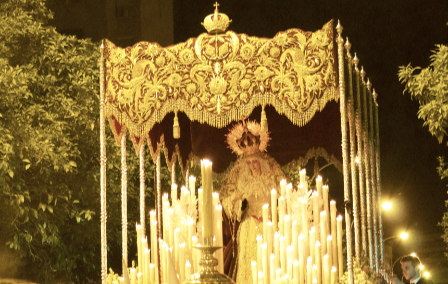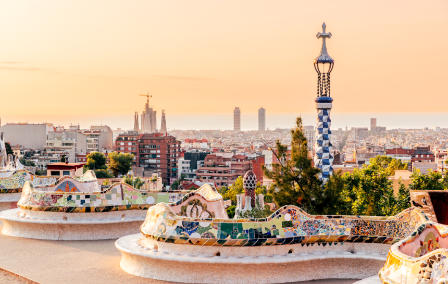Published 28th Jun. 2021
Reading time
Forget your preconceptions: Tenerife is much more than just a 'fly and flop' destination. The island, the largest of the Canary Islands, has a rich architectural culture and the fauna found in Teide National Park and north east of the island in the Anaga Mountains makes Tenerife a wonderful place to visit.
Teide National Park
During the cooler months the temperature is around 18 degrees and in summer is an average of late twenties/early thirties, making this a genuine all-year round destination. With two UNESCO World Heritage sites on the island, you are spoilt for choice. The first is the Teide National Park which has a cable car that takes you up 12,000ft to Mount Teide, Spain's highest peak. Take the cable car up at sunset for the most magical sunsets over the mountain. At the centre of the park Mount Teide dominates the island and is responsible for the diverse landscape. The views around the park are outstanding and worth stopping for, and there are 12 specific viewpoints that you can stop at. During winter the top of Mount Teide is covered in snow, yet surrounded by pine forests and rainforests. In spring the National Park is home to a local plant, Echium Wildpretii, which grows up to seven feet tall but sadly dies soon after. As spring is the traditional low(er) season for the island, there are fewer people on the walking trails.
One of the many reasons why Teide National Park is a UNESCO World Heritage Site is the quality of its stargazing (deemed the third best in the world, after Hawaii and the Atacama Desert in Chile) thanks to the absence of light pollution. Tenerife is also home to the world's largest solar observatory, an awe inspiring experience for families.
La Laguna
The city of La Laguna is the second UNESCO World Heritage Site, 30 minutes from Mount Teide and in the north of the island. This city was the ancient capital of the Canary Islands, with an architectural style that was then taken to the new worlds of Cuba and Latin America. It is a city with a large number of religious buildings, most of which you can visit.
Garachico
The small town of Garachico, with two old style houses that have been converted into small hotels, is a brilliant base for those into cycling. It is possible to rent bicycles for your stay, though much of cycling is up steep roads. In this beautiful town the local swimming pool is a seawater pool carved out of the rocks and with steps into the sea. There is also a small black sand beach, further evidence of the island's volcanic beginnings. On the edge of the waterfront is a small fort that once protected the town when it was the centre of the sugar cane business. Located just over an hour from Tenerife's airport in the south, it will soon (some would argue sadly) be more accessible from the resorts on the south-west coast when a new tunnel is completed.
La Gomera
It is possible to take a day trip from Tenerife to the neighbouring island of La Gomera to go whale watching. The chances of seeing pilot whales and bottlenose dolphins is very high, as this is one of their natural habitats. As the rules surrounding watching the whales are very strict, you won't feel like you are with lots of other boats. This is a brilliant outing for everyone as you have to keep your eyes peeled.
There's more: Tenerife is home to five Michelin Star restaurants and outstanding local eateries and markets where you can sample the excellent local produce and Canarian cuisine.
And then of course you can just make yourself comfortable on the nearest sun lounger and enjoy one of Europe's most reliable climates.

Want to experience Spain like a local? We can help you get under the country’s skin, from Green Spain’s mountains to the Balearic Islands’ sun-soaked coasts. Fear not about missing out on the country’s popular spots, as we can help source tickets to sites like the Alhambra (even when it’s sold out) and advise on the best times to avoid the crowds. Our in-country Concierges can provide tried and tested tips, from secret eateries in Seville to pointing you towards Catalonia’s oldest lighthouse. When it’s time to hit the hay, we’re constantly on the lookout for properties with the best locations, restaurants and ways to relax.
ENQUIRE NOWPractical advice and inspiration for your next trip

Sick of relentless rain and constant colds? It’s time for a winter getaway. Many people think of Spain as a summer spot, but we’re firm believers that Barcelona is breathtaking whatever the weather. From sparkling Christmas markets and ornate cathedrals to buzzing bars and tasty tapas, there are a million reasons to visit Barcelona in winter. Lucky for you, we’ve compiled a shortlist of the top five.
21st May 2025 - Spain Travel Inspiration

Easter in Seville is a whole lot more than chocolate eggs and fuzzy yellow chicks. Known as Semana Santa (Holy Week), the seven-day celebration spans from Palm Sunday to Easter Sunday and is one of Spain’s most deeply rooted Catholic traditions. In Seville, schools shut, some workplaces close and the whole city pitches in to honour the Passion of Jesus Christ with processions, floats and flamenco-style prayers.
20th February 2025 - Spain Culture

With lush parks springing to life and rooftop bars filling with sun-seekers, what better time to visit Barcelona than in spring? Whether you want to join the Sant Jordi celebrations, marvel at the view from Montjuic Castle, dig your feet into honey-hued sands or meander through the city’s winding streets, this season has plenty to offer. Read on for our carefully curated guide on what to do in spring
27th January 2025 - Spain Travel Inspiration

Our team of destination experts will get to know you and your unique requirements for your holiday

We work with you to build an ultra-personalised holiday itinerary with your choice of accommodation, experiences and activities

All of our holidays include little extras designed to make a big difference to your trip, from fast-tracking you through airport check-in and security to our network of local Concierges